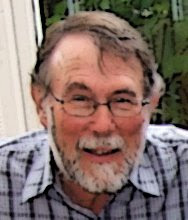A couple of weeks ago we took part in the (notorious!) Bird and Nature Week on Christmas Island. This involved flights to Melbourne, then Perth, an overnight stop in Perth and finally the scheduled flight with Virgin Australia to CI, which takes the best part of four hours. That kinda confirms what the map tells you, that CI is much closer to Indonesia than Australia, and well into the tropics. The CI airstrip was once among the world's six hairiest commercial landings, but since it has been lengthened the pilot only has to cope with the turbulence that the trade winds create over the edge of the island. We got down with only a few bumps, but the cabin crew still suggested that a round of applause for the pilot was appropriate.
CI stands in a rather strange place, operating under the laws of Western Australia, but administered by the Federal government, so there is no GST or Duty on alcohol, for example. And the island was excised from the Australian migration zone by the Howard Liberal government, which means that people arriving on the island cannot automatically apply for refugee status. This is overlaid on a resident population of about 2000, and an economy that has been based largely on the mining of phosphate rock, at least before the construction of the refugee detention centre.
Flying Fish Cove. Phosphate loading right alongside the only swimming beach.
But we were there for the birds, and the crabs! CI is home to large numbers of seabirds, several of which only nest on the island, but also a huge and diverse array of terrestrial crabs which live mainly in the island's rainforests (or "jungle" as the locals call it), but can appear anywhere (such as under the steps up to our room), or everywhere, as they do during the migration when millions of red crabs march to the sea to deposit their eggs.
The ubiquitous Red Crab. Bigger than I thought.
Robber Crab on my boots. The world's largest terrestrial invertebrate.
Forest floor scene. Crabs everywhere and hardly a leaf in sight.
Red-tailed Tropic Bird.
The "Golden Bosun", CI's unique morph of the White-tailed Tropic Bird.
Often more golden than that, and I can't think of another seabird that isn't either black or white, or a combination.
Frigate birds drinking from the resort pool.
A bit scary for swimmers.
The charming, and very tame, Island Thrush.
CI Goshawk, caught by Jeannie (well, more or less).
This is an immature bird.
And the crabs were just amazing. We knew that we were not at the right time for the mass migration, but thanks to a late end to the wet season there were still plenty about. It was so strange to look into the forest and see the floor bare of fallen leaves, with crabs dotted about all over the place, chewing away. And so many giant Robber Crabs! CI is now the main refuge for this huge invertebrate, and it was good to see that the islanders take their conservation seriously. The "Slow Down, Drive Around" road signs were everywhere, and there are very expensive underpasses and even bridges for the crabs to cross the roads. A competition for a new save-the-crabs slogan was on while we were there; our driver John (from Cornwall) came second with his entry: "Better Red than Dead".
Mind that Robber Crab! They jump up under vehicles.
The monthly toll. Note the insert directed at the detention centre staff.
Underpass for Red Crabs. They cost $0.5m each to build!
The alternative: a crab bridge. And cheaper at a mere $250,000.
Chinese Buddhist centre in The Settlement.
The swimming end of Flying Fish Cove. Really the only sheltered beach in the island.
The detention centre, tucked away at the other end of the island.
Navy frigate unloading asylum seekers.
SIEV: Suspected Illegal Entry Vessel.There was another very moving memorial to the SIEV X.
Would I go back? Like a shot: to see the crab migration, to take time to watch the birds and to enjoy the gentle pace of quirky Christmas Island.



















Nice to read a good travel and I hear the delight in voice/fingers as you type about all those birds and crabs. Incidently to any of the birds eat crabs?
ReplyDeleteHi Big Al, trying to comment but it looks like 'anonymous' is the only easy option - and I don't particularly want to be anonymous.
ReplyDeleteWordpress is much easier for technically challenged people.
Jim
Comment...just to see if I could add a comment. But also to let you know that (thanks to Facebook!) I now know about your blog, have added it to my RSS reader and will endeavour to follow all your wise words...
ReplyDeletePS I found commenting easy, not sure what Wilson's problem is...
DeleteWell, you know..... some people aren't quite cut out for the 21st century.
DeleteHi :-)
ReplyDeleteBack home now - lovely to catch up with your travels - yes I enjoy the everyday life of Tassie folk but enjoy travels too :-) xx
Loved reading this and seeing your pictures. Took me straight back to CI and what a great experience that was! Thankyou.
ReplyDelete